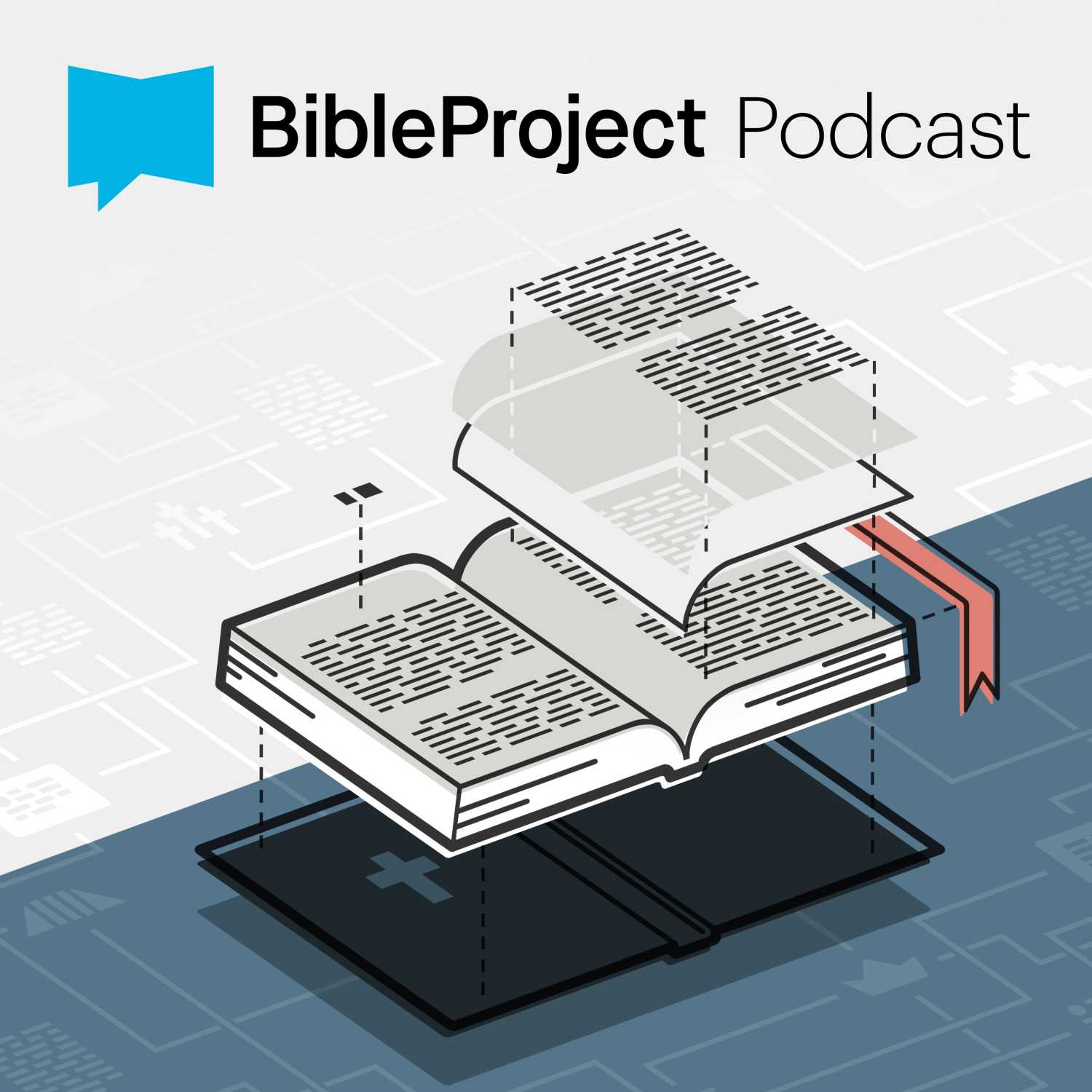
Bible Basics
Welcome! The Bible Basics Podcast is designed to make the Bible approachable and accessible for all, particularly those who are new to the faith or curious about the Bible. Each episode focuses on a specific topic, breaking it down into bite-sized chunks and offering foundational knowledge about the Bible's structure, types, writing, and storyline. The ultimate goal is to increase listeners' comfort level with the Bible and deepen their relationship with God through reading His Word.
Click this link to send us a message:
https://www.buzzsprout.com/twilio/text_messages/2180587/open_sms
Bible Basics
John, Part 1 – The Word Who Came Near
We walk the big picture of John’s Gospel, from the cosmic prologue to breakfast by the sea, to show how Jesus reveals God’s heart up close. Signs, I Am statements, the cross, the Spirit, and restoration form one story that invites belief and brings life.
• how John differs from the Synoptics
• who wrote John and why that matters
• the prologue’s claims about the Word
• seven signs that reveal identity and compassion
• seven I Am statements that invite trust
• love that serves in the upper room
• the Holy Spirit as helper and guide
• the cross, the resurrection, and restoration of Peter
• John’s purpose: belief that leads to life
If this episode helped you see Jesus a little more clearly, share with someone who might need that reminder too
Related Episodes:
- The Gospel of Matthew Explained: Jesus the King
- The Gospel of Mark: The Fast-Paced Story of Jesus
- A Seat at the Table: Exploring the Gospel of Luke
Resources:
Barnett, P. (2011). John: The shepherd king (Rev. ed.). Reading the Bible Today Series. Sydney, South NSW: Aquila Press.
Benware, P. (n.d.). Survey of the New Testament (Rev. ed.).
Burge, G. M. (1995). John. In Evangelical commentary on the Bible (Vol. 3). Baker Reference Library. Grand Rapids, MI: Baker Book House.
Galan, B., & Curiel, J. (n.d.). Bible overview (p. 402). [Kindle edition].
Got Questions Ministries. (2002–2013). Got Questions? Bible questions answered. Bellingham, WA: Logos Bible Software.
Keown, M. J. (2018). Discovering the New Testament: An introduction to its background, theology, and themes: The Gospels & Acts (Vol. I, pp. 287–289). Bellingham, WA: Lexham Press.
Meyer, J. (n.d.). Everyday life Bible.
Tyndale House Publishers. (n.d.). Life application study Bible (NKJV).
Zondervan. (2011). The Holy Bible: New International Version. Grand Rapids, MI: Author. (John 13:34–35)
We'd love to hear from you - Click Here to Text Us a Message.
Have questions about what it means to follow Jesus?
Whether you’re just starting your faith journey or exploring what the Bible teaches, we’d love to walk with you. God’s invitation is real, personal, and full of grace.
💬 Reach out to Jacqui at info@bible-basics.org
📖 Talk to a trusted Christian in your life
🏠 Or visit a Bible-believing church near you
You are not alone. God’s Word is alive, and He is still drawing people to Himself today. Don’t hesitate to take the next step.
Thank you for tuning in!
Bible Basics is now streaming in video on Youtube. Please subscribe now!
Feel free to contact us at info@bible-basics.org. We would love to hear from you!
Note: All scripture references are from the NIV translation unless otherwise indicated.
Greetings, listeners. Have you ever wondered what God would be like if he showed up in person? Would he look powerful, gentle, would he stay distant, or sit beside you and ask how you're really doing? That's exactly what the Gospel of John is about. God showing up in the person of Jesus. John begins with a breathtaking statement. John is more than a story, it's an invitation to see God's heart up close. Well, welcome everyone. I'm your host, Jacqui Adewole, and this is the Bible Basics Podcast, where every two weeks we break down the basics of the Bible into understandable bite-sized chunks. Today we begin a three-part series on the Gospel of John. In part one, we'll get to the big picture of the whole book. In part two, we'll hear who Jesus is in his own words through the I am statements. And in part three, we'll look at the signs and what John means by believing. So let's start by setting the scene and talk a bit about why John feels different. If you've been with us a while, we've already walked through the first three Gospels, Matthew, Mark, and Luke. They're called the Synoptic Gospels, which just means seen together, because they tell many of the same stories and follow a similar path through Jesus' life. The Gospel of John takes a different path. The other Gospels show us what Jesus did. John focuses on who Jesus is and why that matters. Most scholars place this gospel near the end of the first century, written for believers sorting through the big questions about Jesus. Some in that time claimed Jesus was only a spirit and not truly human. And we see that in the book of 1 John, chapter 4, verses 2 through 3. Others said he was only a teacher and not truly God. We see that in the book of John, chapter 10, verse 33. John answers both ideas by taking us all the way back to the beginning. Quote, In the beginning was the Word, and the Word was with God, and the Word was God. John is saying in this very first verse of the book that Jesus has always existed, that He is with God, and that He is God. Then John brings this truth close to us. The Word became flesh and made his dwelling among us. God the Creator stepped into his creation. God became truly human in Jesus so that we could know him. Before we go any further, let's talk about the person who wrote these words, John. Because when you know who's telling the story, you start to understand why they tell it the way they do. The writer is John the Apostle, not John the Baptist. John was one of the original twelve disciples. He was the son of Zebedee and the brother of James. He was part of Jesus' closest circle with Peter and James. They saw things the others didn't, like the raising of Jarius' daughter in Mark chapter 5, verse 37, the transfiguration in Mark chapter 9, verse 2, and Jesus' agony in Gethsemane, Mark chapter 14, verse 33. In this gospel, John doesn't name himself as the author. He uses the title, The Disciple Jesus Loved. We see that in chapter 13, verse 23, and several other places in the book of John. Now he wasn't bragging, he was being humble and reverent. John had a uniquely close relationship with Jesus, having stood beside him for three years. He'd heard his teaching and leaned against his shoulder at the Last Supper. In chapter 19, verse 26, nearing his death on the cross, Jesus entrusted the care of his mother to John. Those moments changed him completely. The same man who wanted to call down fire on people who rejected Jesus. We see that in Luke chapter 9, 54. He later wrote letters that sound like a changed man, full of love for God and for people. Now let's talk a bit about the structure and the purpose of the book. That's chapter 1, verses 1 through 18. John opens his gospel with one of the boldest statements in all of Scripture. In the beginning was the word, and the word was with God, and the Word was God. Right here, John gives us three key truths about Jesus. First, he's eternal. In the beginning, he already was. Second, he's distinct from God the Father. The Word was with God. And third, he is fully God. The Word was God. In just one verse, John shows that Jesus did not begin in Bethlehem. He has always existed. The same word who was with God in the beginning is the very one through whom everything was made. Verse 3 says, Through him all things were made. That's the same creative power we see in Genesis. The creator himself stepping into his own creation. Early Christian tradition places John in Ephesus, a major city where both Jews and Gentiles lived. We see that in Acts 19, verses 1 through 12. That setting helps explain why he begins by calling Jesus the Word, or in Greek Lagos. For Jewish readers, the word meant the powerful voice of God that spoke creation into being. And God said, Let there be light. For Gentile readers, those who were not Jewish, Lagos carried the idea of divine reason or wisdom, the mind that orders and sustains the universe. By using this word, John brings both ideas together to say the divine power behind everything you've ever known has now taken on flesh, and his name is Jesus. Then in verse 14, John makes an extraordinary claim. Quote, the word became flesh and made his dwelling among us. That means the eternal God took on human life. Jesus became one of us, not distant or unreachable, but right here, living among us, sharing our struggles and showing us the heart of God. John continues saying that Jesus is, quote, full of grace and truth. Grace means God's kindness and love that we could never earn. Truth means what's real, study, and trustworthy. In Jesus, grace and truth meet perfectly. John's also saying in chapter 1, verse 9, that Jesus is the true light that gives light to everyone. That light helps us see clearly in a world that can often feel dark and confusing. Some rejected that light, even his own people. But to all who receive him, to all who believe in his name, God gives the right to become his children. That's what the opening of John is all about. The eternal word, who is God Himself, became human so that we could know him personally. So if you've ever wondered what God is like, look at Jesus. He's the light of the world and the love of God made visible. After introducing who Jesus is in the prologue, John moves to show what Jesus did in the first major section of the gospel. That's chapter one, verse 19 through chapter twelve, verse 50. This section records seven miracles or signs that reveal Jesus' identity and compassion, turning water into wine, healing the sick, feeding the hungry, calming storms, and even raising the dead. John calls them signs because they point to something deeper. They aren't just displays of power, they reveal God's heart and invite people to believe. Each miracle shows a little more of who Jesus is, the creator restoring creation, the healer, bringing wholeness, the bread of life feeding the hungry soul. We'll go deeper into these signs in part three of this series. Also throughout these chapters, John includes the seven I am statements, where Jesus describes himself using images people could understand: bread, light, a shepherd, a vine. We'll cover those in part two of the series. So together the signs and the I am statements reveal that Jesus is not only powerful, but personal. He came not to impress, but to invite people to believe. Sadly, not everyone believed. This section ends with a moment of decision. Some people rejected Jesus despite all they'd seen, while others believed and followed him. Their choice mirrors the one each of us must make when we see the truth about who he is. From chapter thirteen onward, we have the second major section where the story really slows down. Almost a third of John's gospel focuses on the final week of Jesus' life, his time with the disciples, his death, and his resurrection. John calls this the moment of Jesus' glory. This section features Jesus teaching his disciples privately, beginning with a simple but powerful act. Jesus washing the disciples' feet, showing that love serves. And we see that in chapter 13, verses 1 through 20. Jesus was preparing these men to go into the world to serve God, to serve one another, and to serve the people who would hear the message of salvation through them. That same night, he gives them a new command. Love one another, as I have loved you, so you must love one another. That's chapter 13, verse 34. That's one of the greatest themes in John: loving God, receiving his love, and loving others in the same way. During these final hours, Jesus also teaches about the Holy Spirit. He calls the Spirit our helper, our comforter, and the Spirit of truth, the one who will live within believers to guide and strengthen them. While the other Gospels mention the Spirit, John's focus is unique. He shows us that the Spirit's ministry in us begins through Jesus' death and resurrection, continuing God's work in and through his followers. Then John takes us to the cross. Jesus willingly lays down his life and declares it is finished. Those words mark the completion of his mission, the moment when sin is defeated and grace is made possible. The resurrection follows, confirming everything Jesus said about himself and showing that love has the final word. Now we move to the epilogue or the closing. John closes his gospel with one last beautiful scene. This is John 21. After the resurrection, Jesus meets his disciples by the sea and shares breakfast with them. In that quiet moment, he restores Peter, the disciple who had denied him, and calls him to keep following and caring for others. It's a simple yet powerful ending that reminds us what this whole book is about: a God who restores, forgives, and invites us into relationship. Each of these sections, from the opening prologue to the closing scenes by the sea, work together to tell us one unified story. John wants his readers to see Jesus clearly, not just as a teacher or a miracle worker, but as God Himself, who brings light and life to the world. And that brings us to the reason John wrote this gospel in the first place. John doesn't leave us guessing about why he wrote all this. Through every chapter, John invites us to see God's heart and his compassion, his miracles, his teaching, and his sacrifice. He's the God who washes feet, who weeps with the grieving, who feeds the hungry, and who restores the broken. He is the God who came close, the light that still shines in the darkness, and the love that still reaches for us today. As you go about your week, take a moment to think about this. The same God who spoke creation into being stepped into his creation to walk beside you. He isn't far away. He understands your fears, your struggles, your hopes. Wherever you are today, he is near, full of grace and truth. If this episode helped you see Jesus a little more clearly, share with someone who might need that reminder too. You never know whose heart might be encouraged by hearing that God still comes close. Until then, keep reading, keep seeking, and keep growing in your faith.
Podcasts we love
Check out these other fine podcasts recommended by us, not an algorithm.

Is Your Way In Your Way?
Cassandra Crawley MayoDisciple Dojo
JM Smith
Everything Everywhere Daily
Gary Arndt
Grammar Girl Quick and Dirty Tips for Better Writing
QuickAndDirtyTips.com